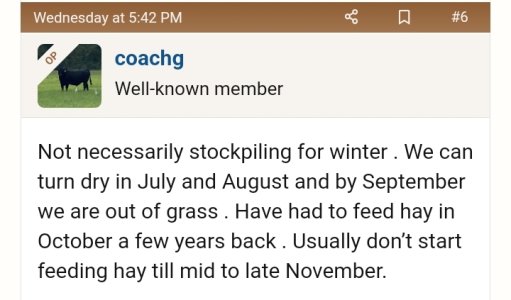You should be able to stockpile fescue for winter grazing fairly well in Western NY. I'm guessing the only limitation you may encounter there is that the snow gets too deep for the cattle to dig through it. Cattle will root through several inches of snow, but the amount you get there is probably a bit excessive. I'm guessing that is why it isn't stockpiled. Timothy isn't good for winter stockpiling and orchardgrass is only marginally so. KY31 tall fescue on the other hand makes excellent stockpiled forage throughout Ohio, Indiana, Illinois and I'm going to say Pennsylvania as well, although I'm not as familiar with the snow load there. The endophyte found within the tall fescue, that is so problematic, actually makes the fescue pretty much the best forage to stockpile for winter grazing in this area. What happens is that the freezing converts the starches in the fescue to sugars in the winter and the endophyte enables the plant to persist. Tall fescue can, and does, actually grow under a blanket of snow. Fescue (KY31) makes for a better grazing forage during the winter than during the summer months when the endophyte tends to have more of a negative effect on livestock and the plants themselves tend to become rather coarse and palatability drops. Ask
@Jeanne - Simme Valley about forages and fescue in NY. My stomping grounds are primarily Ohio right now, but that is going to change.

